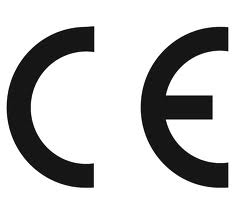An Engineer Takes on CE Marks and European Commercialization
Medical device companies have one primary goal: to develop, manufacture and market a medical device that addresses an unmet market need. While it’s a common goal, the medical device regulatory approval process can be confusing for design and development engineers. They may hear terms such as “safety agency,” “CE mark,” “Notified body,” “510K” and “PMA” tossed around by quality and regulatory professionals.
August 23, 2012
Medical device companies have one primary goal: to develop, manufacture and market a medical device that addresses an unmet market need. While it’s a common goal, the medical device regulatory approval process can be confusing for design and development engineers. They may hear terms such as “safety agency,” “CE mark,” “Notified body,” “510K” and “PMA” tossed around by quality and regulatory professionals. Although these terms are likely somewhat familiar, their true meanings and proper application are not always clear to many of us who are part of the development process.

To commercialize any medical device, the appropriate regulatory process must be followed. This process varies depending on the country where the device is intended to be marketed and sold. So, how do medical device companies obtain approval of their products in Europe, in the US, and in other countries around the world? This three-part series will address what engineers need to know from a design and development standpoint.
The first installment of this series will provide details about the CE Mark process in Europe.
CE Mark, Commercialization of Medical Devices in Europe
To sell a medical device on the European market, it must first be CE-marked. A CE mark on a medical device means that the product meets the essential requirements designated in Annex I of the Medical Device Directive (MDD) 93/42/CE. The MDD is a European Regulation which is intended to harmonize the laws within the European Union which pertain to medical devices.
CE Mark – Device Classification
One of the first steps in the European regulatory process is to determine the appropriate classification of the device. The MDD classifies devices into four categories based on the amount of risk associated with the device : I, IIa, IIb, and III. These categories and some device examples are described in Table I.
Classification | Risk Level | Device Examples |
1 | Low | Cervical collars, hospital beds, wheelchairs, stethoscopes, wound dressings. |
IIa | Low-medium | Hearing aids, diagnostic ultrasound equipment, electrocardiographs, infusion pump tubing, dental bridges and crowns. |
IIb | Medium-high | Tracheal cannulae, long term corrective contact lenses, peripheral vascular catheters, high-frequency electrosurgical generators, most therapeutic/surgical ultrasound equipment. |
III | High | Cardiovascular catheters, neuro-endoscopes, absorbable sutures, left ventricular assisting devices (LVADs), drug eluting stents (coronary or pulmonary). |
There are several characteristics described in the MDD that determine device classification, including:
Duration of patient contact, either transient (<60 minutes); continuous (>60 minutes, <30 days); or long term (>30 days).
Degree of invasiveness, including noninvasive, invasive through a body orifice, surgically invasive,
Operative mode of action, either passive or active. In active mode the deivce depends on a source of electrical energy or other power besides gravity or the human body)
Effect on body, such as local (limited to area where the device is applied) or systemic, for which the effects of the device may be outside the area of application (e.g., via the circulatory or central nervous system).
Essential Elements, Regardless of Classification
Regardless of device classification, all medical device manufacturers must prepare the specific elements to submit to the regulatory body.
CE Technical File. A Technical File provides the summarized technical information about the device. If the device is Class III, the Technical File is called a Design Dossier. Some of the elements included in a CE Technical File or Design Dossier may include: risk analysis, design input specifications, design verification test results, biocompatibility test results, instructions for use, packaging and labeling documentation, and clinical data. The higher the device classification, the more substantive the information provided is required to be. A Design Dossier for a Class III device such as a cardiovascular catheter, for example, will generally include a significant amount of supporting clinical data, whereas the Technical File for a Class I or Class IIa device such as a wheelchair or a hearing aid may not include any clinical data.
Essential Requirements. The manufacturer must provide evidence that the device meets the essential requirements which are defined in Annex I of the MDD. Often this evidence consists of a line-by-line checklist of the requirements and an explanation of which requirements are applicable and not applicable to the device. For the applicable requirements, references are made to supporting quality system and device documentation such as SOPs, risk analysis, design specifications, and/or design verification test results (often to a European harmonized standard) which demonstrate compliance.
EC Declaration of Conformity. The manufacturer provides an EC Declaration of Conformity ensuring that the product meets the applicable provisions of the MDD.
Competent Authority Notification. When placing a device on the market, manufacturers must notify the Competent Authority of the country in which their business is registered and provide a description of the device. For medical devices of classes IIa, IIb, and III, a Competent Authority may request additional data such as labeling and instructions for use.
Post-Market Surveillance. Manufacturers must record, evaluate, and notify the surveillance authority of incidents as required per the MDD. They must review experience gained from marketed devices in the field and implement any necessary corrective action.
CE Mark – Regulatory Process
Once a device has been classified in accordance with the MDD, the regulatory strategy can be planned. The higher-risk the device, the more rigourous the regulatory process will be. The MDD allows for several different regulatory approval paths for each device classification. Table II describes some commonly used regulatory approaches for obtaining a CE mark.
Device Classification | Risk level | General regulatory process |
I—nonsterile | Low | • Technical File (self-certification; does not require review by a Notified Body) + |
I—sterile or measuring function | Low | • Technical File + |
IIa | Low-medium | |
IIb | Medium-high | |
III | HIgh | • Design Dossier + |
Notified Bodies and Competent Authorities. A “Notified Body” is a private or public organization that has been accredited by an EU Member State to validate the compliance of a medical device to the MDD. A medical device manufacturer must select a Notified Body to act as an independent third party in the CE Marking process. Many Notified Bodies also provide quality management system certification to ISO 13485, as well as certified product testing, such as testing to the IEC 60601-1 medical device safety standard. Thus, it is possible for a device manufacturer to utilize a Notified Body to assess and provide validation of much of the commonly provided elements which are required for device CE marking.
One common criticism of the European device approval process is that, because fees are assessed by Notified Bodies for many of its services, a Notified Body does not always fully act as an independent party.
A “Competent Authority” is a body which can act on behalf of the government of the Member State to ensure that requirements in the MDD are applied. It also appoints and supervises Notified Bodies, conducts surveillance of medical devices in its Member State, and evaluates adverse incidents related to medical devices.
Conclusion
While navigating the medical device regulatory process is never an easy task—particularly for a non-regulatory expert—this quick-reference should enable you to better understand how your designs and resulting documentation are being reviewed during each step of the process.
More from this series:
An Engineer Takes on FDA Clearance and Approval Processes
An Engineer Takes on Global Regulator Processes: Asia, Latin America, and More
+++++++++++++
Karen Brentnall is senior quality engineer at Stratos Product Development. She has 16 years in product development and quality engineering, during which she developed expertise in class II and III medical device product development. Prior to joining the quality and regulatory world, she worked for eight years as a mechanical design engineer. She has played an active role in the design, development and manufacture of numerous medical devices including the SuperSonic Imagine Aixplorer diagnostic ultrasound system, the Boston Scientific Rotablator rotational artherectomy system, several therapeutic catheter devices and LVADs, and a hemodialysis machine. Her expertise includes development and maintenance of documentation to support medical device regulatory submissions, including risk management, quality planning and verification. Her capabilities also include implementation and maintenance of quality management systems per the FDA medical QSRs and ISO 13485.
About the Author(s)
You May Also Like


